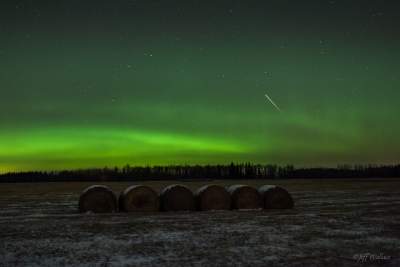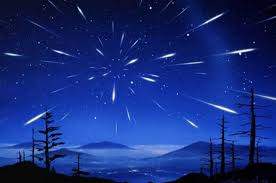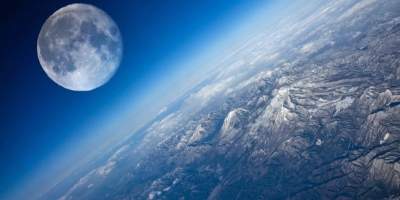 We still call them shooting stars, star or meteor rain and meteor shower.
We still call them shooting stars, star or meteor rain and meteor shower.
But in fact, Starfall is still a meteor shower, but meteors are not stars. In fact, it is space debris – small particles of dust and ice left after the comets that are moving too close to the sun. When our planet passes through this debris, the particles fall into the atmosphere where they are rubbing with the air molecules and burn. And this is what we can see in the sky.

Quadrantids
Quadrantids usually active in January. You can usually see about 25 meteors each hour of flying in the night sky. Radiant or area of the celestial sphere, the apparent source of Quadrantids, located in the Northern tip of the constellation Bootes near the Big Dipper. This meteor shower is best seen from the Northern hemisphere.

Lerida
Lerida active in April. During the peak flow every hour in the night sky can be observed approximately 10 to 15 meteors. But sometimes there are occasional bursts of up to 100 meteors per hour. The radiant of the Lyrids is the star VEGA in the constellation Lira. Lerida best seen from the Northern hemisphere.

ETA-Aquarids
η-Aquarids are active in the period from April to may. Depending on the location can be seen from 10 to 60 meteors every hour. The radiant of this stream is, This star is in the constellation of Aquarius. ETA-Aquarids are best seen from the southern hemisphere.

Delta Aquarids
The Delta Aquarids are active from July to August. In the night sky every hour you can see 15 to 20 meteors. Radiant is the star SKAT or Delta in the constellation Aquarius. This meteor shower is best seen from the southern hemisphere.

Alpha-Capricornid
Alpha-Capricornid active in the period from July to August. This is one of the most weak meteor showers — no more than 5 meteors per hour. But he is well known for its spectacular car – the glow of a meteor is so bright that it overshadows the rest of the sky. The flow is observed in the Northern and southern hemispheres.

The Perseids
The Perseids are also active in the period from July to August. Meteors released from the comet swift-tuttle. You can usually see 50 to 75 meteors per hour. Their apparent source is the constellation of Perseus. These meteors are bright and fast and often leave behind persistent trains in the sky. They are best seen from the Northern hemisphere.

Orionid
Orionid active in the period from October to November. Although you can usually see only 10-20 meteors per hour a few years the number of competed activity from the Perseids, every hour, producing 50 to 75 meteors. This stream is also known that from time to time caused the permanent traces and fireballs. The apparent source of the meteors is the constellation of Orion.

Draconids
Draconids are active in October. Although the stream is usually pretty sparse, releasing just a few meteors per hour, there was a time when the Draconians hourly was the source of thousands of meteors. These meteors seem to be departing from the head of the constellation Draco in the Northern sky. Because of this, the flow is best seen from the Northern hemisphere.

South Tauride
South Tauride active from September to November. Despite the fact that the thread is active for more than two months, he rarely produces more than 5-7 meteors per hour, even in peak. However, this thread is the cause of many fire balls. The apparent source of the South Taurid is the constellation Taurus.

North Tauride
North Tauride active in the period from October to December. The flow is very similar to South Tauride, producing only a modest 7 meteors per hour. Meteors are often quite slow, but can be very bright, sometimes with fireballs. As in the case of South Tauride, the apparent source of the North Taurid is the constellation Taurus.

Leonids
Active Leonids in November. They originate from the comet Tempel-tuttle. Although every few decades, the flow creates a true meteor storm with thousands of meteors per minute, in most cases, every hour can be observed only 10-15 meteors. The radiant flux is the constellation of Leo.

Geminids
The Geminids are active in December and, as a rule, are the most powerful meteor shower of the year. The meteors are often bright white and can fall very often — up to 120 per hour. The radiant of this stream are the stars castor and Pollux in the constellation Gemini. The Geminids are best seen from the southern hemisphere.

Ourside
Ourside active in December. Meteors fly in the sky at a speed of 10-15 pieces per hour, with occasional bursts up to more than 25 flashes per hour. The meteors originate from the comet tuttle. The flow can only be seen from the Northern hemisphere. The radiant is in the constellation URSA Minor.








